If you have a secret recipe or an article perfect for sharing on our blog section, don't hesitate to let us know at [email protected] -- everyone has something extraordinary to offer and we can't wait to hear yours! Join us as we explore delicious flavors around the globe!
For now, love yourself and enjoy this one ...
Now love yourself and enjoy this one ...
Skip the processed frozen waffles and enjoy making your own homemade buttermilk waffles for breakfast or any time of the day!
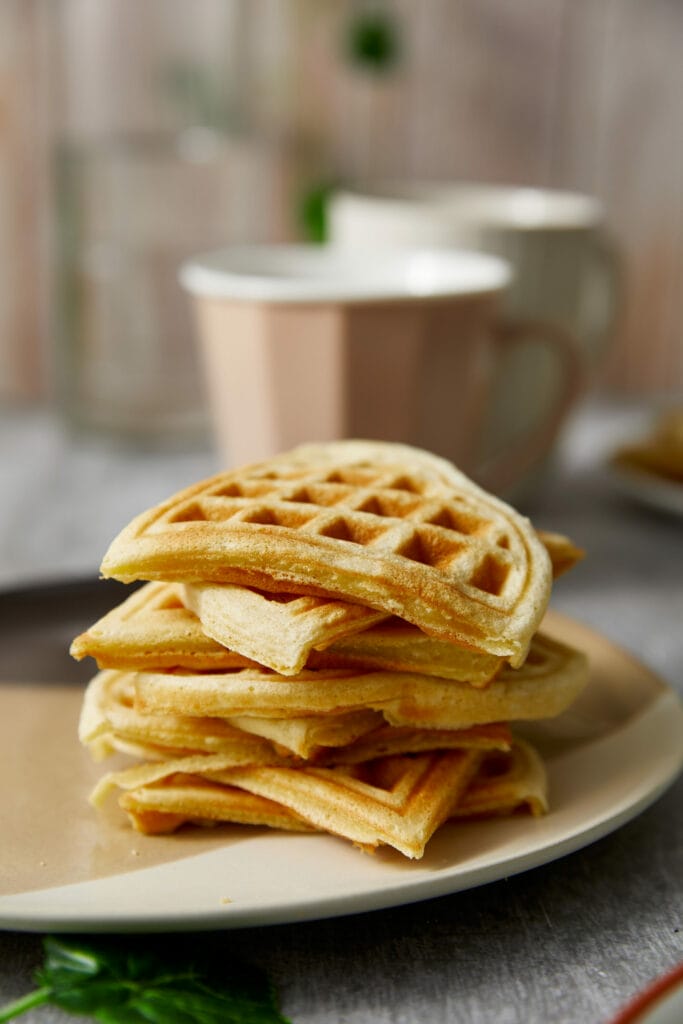
I grew up with waffles as a dinner staple when mom was tired, or the groceries were low. She worked full-time and somehow, amazingly, still provided us with a homemade meal every night. Waffles were one of my favorites and still are today.
Waffles came from their namesake, wafers. Long ago, wafers were pressed between two irons to form an attractive shape. At some point, leavening was added, and now we have delectable, fluffy waffles! They are one of the most versatile foods, created as dessert, breakfast, lunch, or dinner. Top waffles with butter and syrup, fruit and whipped cream, homemade jam, or eat them plain as a snack.
There are waffle recipes that don’t use buttermilk, such as these protein waffles or dairy-free waffles, and they turn out great. However, I love the slight tang that the waffles get from using buttermilk. Buttermilk is rich and creamy, and I think it makes the best waffle.
I love how fast this recipe is made, and I also appreciate that, like many waffle recipes, it requires ingredients I often have available in my pantry and refrigerator. Keep buttermilk waffles in mind the next time you need a quick dinner or a fun breakfast.
Is Classic Buttermilk Waffle Healthy?
Waffles are what you make them. In other words, using a lot of syrup and butter to top off a waffle is not as healthy as eating a waffle with fresh fruit. This recipe for buttermilk waffles is a healthy choice since it is made from scratch with no added artificial ingredients; however, it is not suitable for some special diets. Still, don’t throw in the towel! It’s easy to swap out some of the ingredients and enjoy a yummy waffle.
Try gluten-free waffles using a gluten-free flour mix, or ditch the sugar for honey with these paleo-friendly waffles. You can also make dairy-free waffles using almond milk rather than buttermilk. As I said, waffles are versatile, not only in how they are served but also in how they are made.
Strike while the iron is hot
What’s the secret to perfectly golden waffles with a crispy outside and fluffy soft inside? It’s the hot waffle iron. If you notice your waffles turning out pale-looking or not having a nice crisp, it’s probably the waffle iron. You must allow the iron to get nice and hot before dropping the batter onto it. This way, the outside will darken nicely and seal the inside for beautiful squishy waffles.
INGREDIENTS
- 2 cups all-purpose flour
- 2 tablespoons sugar
- 2 teaspoons baking powder
- 1 teaspoon baking soda
- 1/2 teaspoon salt
- 2 cups buttermilk
- 1/3 cup unsalted butter melted
- 2 large eggs
- 1 teaspoon vanilla extract

INSTRUCTIONS
Mix Dry Ingredients
Combine flour, sugar, baking powder, baking soda, and salt in a bowl.
Combine Wet Ingredients
Whisk together buttermilk and butter, then add eggs for a smooth mixture.
Make Batter
Fold dry ingredients into wet, add vanilla, and let it rest to develop flavors.
Cook Waffles
Pour batter into preheated waffle iron and cook until crispy and golden.
Serve
Top with syrup and berries, and DEVOUR!
Devour!
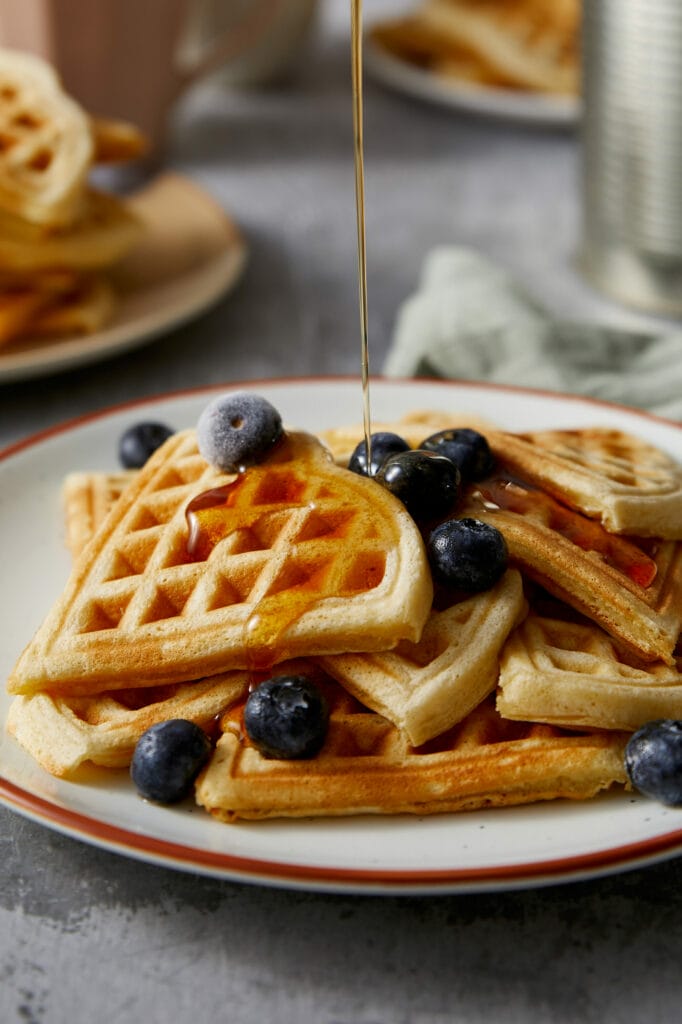
FAQs & Tips
You can easily store your leftover waffles in an airtight container in the refrigerator for up to three days or in the freezer for about three months. Reheat them in the oven (defrost first if frozen) at 350 degrees Fahrenheit for 10 to 15 minutes, or plop them in the toaster.
Don’t worry if you don’t have buttermilk on hand. You can make your own substitution. Pour one tablespoon of lemon juice into a liquid measuring cup and add milk to reach one cup. The lemon juice sours the milk and creates buttermilk.
If you want to jazz up the batter a bit more, add spices such as cinnamon or nutmeg. Also, a splash of orange juice adds a little bite to the waffles. Fruit is a healthy option, so consider tossing some blueberries or crushed pineapple into the waffle batter. And, of course, chocolate chips are perfect for dessert waffles.
If your waffles fall flat, you may be allowing the batter to sit too long after mixing it. When you mix waffle batter, it’s essential to use it right away while it’s full of air pockets, which help make fluffy waffles. The batter loses that air as it sits, leading to flat waffles.
Hard and chewy waffles usually occur when you draw too much gluten out of the flour. This happens when you get too crazy with the mixing. Similar to pancakes, it’s best not to overmix the waffle batter. Mix until everything is combined but not perfectly smooth. A few lumps are good.
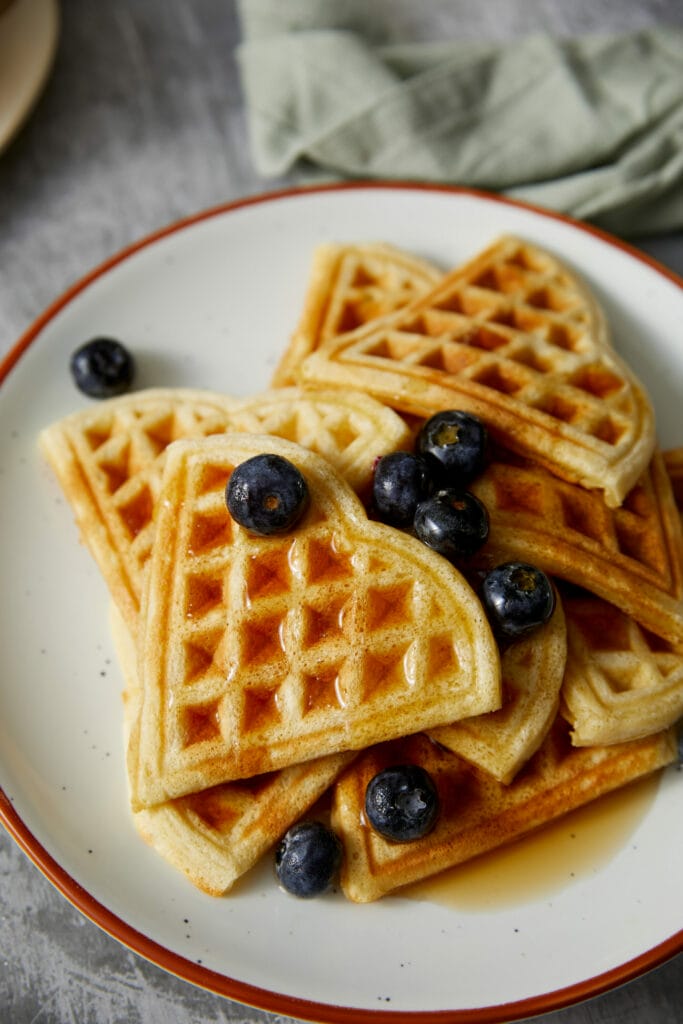
Serving Suggestions
You’ve made your waffles, and it’s time to eat! Yay! What should you serve them with? I often turn to the classics, like waffles with maple bacon or some soft scrambled eggs. Still, it’s fun to think outside the box.
Recently, chicken and waffles have become wildly popular, so go ahead and shake things up at dinnertime with homemade crispy chicken and buttermilk waffles. Then, for dessert, bring out perfect chocolate waffles to top it all off.
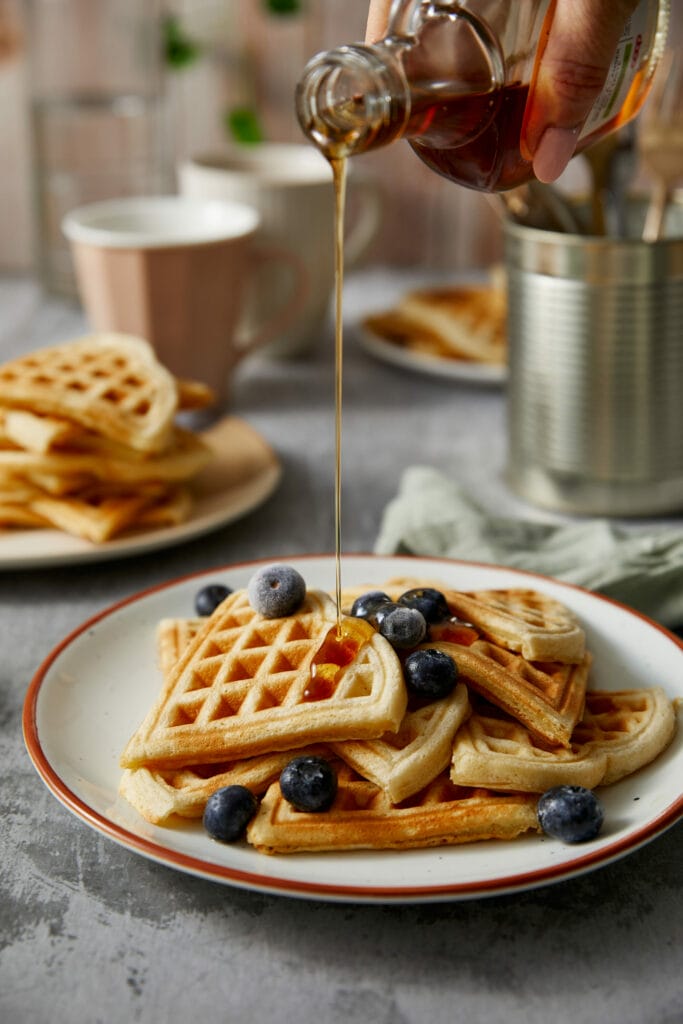

Classic Buttermilk Waffle Recipe
Ingredients
- 2 cups all-purpose flour
- 2 tablespoons sugar
- 2 teaspoons baking powder
- 1 teaspoon baking soda
- 1/2 teaspoon salt
- 2 cups buttermilk
- 1/3 cup unsalted butter melted
- 2 large eggs
- 1 teaspoon vanilla extract
Instructions
- In a medium bowl, whisk together the flour, sugar, baking powder, baking soda, and salt.
- In a separate bowl, combine the buttermilk and melted butter. Beat in the eggs until the mixture is smooth.

- Gently fold the dry ingredients into the wet mixture until just combined, leaving a few lumps. Stir in the vanilla extract. Allow the batter to rest for 10 minutes.
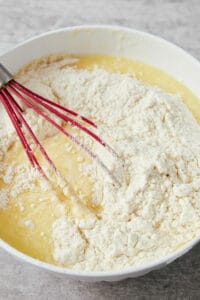
- Heat the waffle iron according to the manufacturer’s instructions and lightly grease it with cooking spray.
- Pour the batter onto the iron, using about 1/3 to 1/2 cup per waffle, and cook until golden brown.
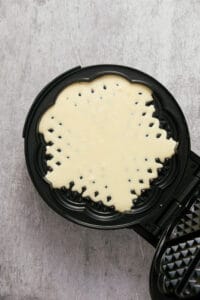
- Serve with your favorite toppings (I am looking at you syrup and blueberries).
Nutrition
The post Classic Buttermilk Waffle Recipe appeared first on Food Faith Fitness.
References:
By: FoodfaithfitnessTitle: Classic Buttermilk Waffle Recipe
Sourced From: www.foodfaithfitness.com/buttermilk-waffles-recipe/
Published Date: Fri, 08 Mar 2024 15:55:55 +0000
Frequently Asked Questions
Is basil good for kidneys?
The answer is yes. Basil is an excellent food for kidney health. It contains potassium which helps reduce high blood pressure. It also contains vitamin K, which is essential for bone strength. As well as this, it is rich in antioxidants which help protect against heart disease.
Basil is great for digestion too. It contains digestive enzymes that break down protein and carbohydrates. This makes it easier to absorb nutrients from your meals.
Basil is a wonderful addition to any diet. Try sprinkling some over pasta dishes, salads, soups, and sandwiches. Or add little stir-fried vegetables, chicken, fish, meat, and tofu.
It's delicious in pesto sauce and fresh in salad dressings. You'll find many recipes online where you can learn how to cook with basil.
Try making basil oil by adding a few drops of pure olive oil to a jar filled with chopped basil leaves. Let it steep overnight, and then strain out the leaves. Use the oil as a massage oil or rub it onto your skin.
It will leave your skin soft and smooth.
Which plant has antibiotic and wound-healing properties?
People often ask about plants that have medicinal uses. Some of these include aloe vera, eucalyptus, chamomile, and lavender. If you're wondering why there aren't any plants used for cleaning and disinfecting purposes, it's because most plants have toxic qualities.
The reason why we use herbs for medicine is that they contain compounds that stimulate our immune system. This means that they help us fight infections and heal wounds.
Some plants also have anti-inflammatory properties. These include ginger, turmeric, and mint.
Herbs such as basil, fennel, marigold, and oregano are great for cleansing the body.
There are even some plants that help prevent cancer. Research shows that black raspberries may reduce the chances of developing breast cancer. The same goes for broccoli. It can help prevent colon cancer.
How do you make medicinal herbs?
There are many different methods to make herbs into medicinal products. The most common method is to dry the herbs in a warm, dark location before grinding them into a powder or extracting their essential oils. This can be accomplished by hanging herbs upside down in bunches, laying herbs on a drying screen, or using a food dehydrator.
Once dried and ground, herbs can be stored in airtight containers for future use. Other herbs may require special preparation, such as infusing herbs into oil or vinegar, making tinctures with alcohol, or distilling herbs to create essential oils.
Learning the correct techniques for preparing herbs can help ensure that they retain their medicinal properties and potency for optimal health benefits. Using fresh herbs is usually best, but herbs can also be grown in a pot or garden and harvested when they are mature. Herbs can be purchased at health food stores, online retailers, and specialty shops.
No matter where herbs come from, the preparation techniques remain the same; drying herbs in a warm location followed by grinding or extracting the essential oils. You can make your medicinal herbs with the right herbs and preparation techniques.
When making herbal preparations, it is essential to remember that herbs can vary in potency, so always dilute herbs before use or follow the directions on any product label. Additionally, herbs are best used fresh, as many of their beneficial components degrade over time.
Following safety guidelines and paying attention to the potency of herbs can help ensure that you get the most benefit from your herbs. With a bit of practice and preparation, anyone can make therapeutic herbs with medicinal properties. Remember that herbs should never replace any medical advice or treatments prescribed by a doctor. Always consult a licensed healthcare professional before using herbs medicinally.
Which herbs are healing herbs?
If you look for healing herbs, you won’t find them in the supermarket. There isn’t any place to buy them. There is no store selling them.
You haven’t been able to find healing herbs because they aren’t sold anywhere. They are grown right here in our backyard.
Healing herbs are plants that grow naturally in North America. Like many common household items, these herbs grow throughout the United States and Canada.
These herbs treat minor ailments such as colds, flu, sore throats, coughs, and headaches. Many of these herbs have been used for centuries to help heal wounds and promote overall health.
Of course, when we say “heal,” we mean more than simply treating an illness. We also refer to the ability of these herbs to restore balance and harmony within ourselves and the world around us.
For example, the chamomile herb helps relieve stress. This means that if you feel stressed out, you may benefit from taking chamomile tea. Chamomile tea has been shown to reduce anxiety and nervous tension.
In addition, chamomile tea has been proven effective in relieving insomnia.
Chamomile tea has many other benefits, including its ability to ease stomach aches and gas pains and even improve digestion.
Another popular healing herb is Echinacea. Echinacea is known for helping to fight infections and boosting the immune system.
Echinacea is commonly taken internally and externally to fight infection, prevent viral diseases, and boost immunity. It is safe to use during pregnancy and lactation.
Echinacea also helps reduce muscle pain and inflammation. You can take echinacea orally or topically (as an ointment).
This herb is available in both liquid and capsule form. Liquid echinacea is often mixed with honey and lemon juice. The mixture is then strained and consumed.
Capsules are usually made of freeze-dried plant material. They contain standardized amounts of active ingredients. To use capsules, swallow one or two a day.
The third type of herbal remedy is called tincture. Tinctures are alcoholic extracts of herbs. They are typically used to treat internal problems. Tinctures are generally diluted before being ingested.
Tinctures can be taken orally or applied topically. For oral consumption, dilute tinctures with water. Some people prefer to mix tinctures with food.
Tinctures are easy to prepare. Put about one tablespoon of dried herb into a bottle containing enough alcohol to cover the herb completely. Allow the mixture to sit for several weeks. Then strain and consume.
You may want to try some of these natural remedies to see which ones work best.
Is it okay to use dried herbs instead of fresh ones?
It is best to pick up fresh herbs whenever possible when using herbs.
Although dried herbs are convenient, they don’t provide the same benefits as fresh herbs.
Fresh herbs contain essential oils that give your food a unique flavor. These oils help preserve the nutrients within the herb.
Dried herbs lose all their flavor after drying, so they cannot replace fresh herbs.
You should only use dried herbs if you absolutely must. Otherwise, you should get your fresh herbs from the market.
Statistics
- The herbs market is highly competitive, with over 1,000 herb suppliers and over 15,000 herbs products available in the United States alone.
- Herbs are among the most popular and widely used medicinal remedies. According to a survey conducted by the National Institutes of Health, herbs were used by over 38% of adults in the United States.
External Links
[TAG33]
- Antioxidant capacity of 26 spice extracts and characterization of their phenolic constituents - PubMed
- Cinnamon: A Multifaceted Medicinal Plant - PMC
[TAG36]
[TAG38]
[TAG41]
How To
What to look for in herbs?
Herbs contain natural compounds that may help treat various conditions. In addition, herbal remedies may provide relief when used along with conventional treatments.
Herbal remedies include teas, capsules, tablets, ointments, creams, lotions, oils, and topical applications. Some of these products are meant to be taken internally, while others are applied externally.
The most common uses of herbal remedies include relieving minor aches and pains, treating cold symptoms, reducing fever, controlling coughs and sore throats, easing digestion problems, soothing skin irritations, alleviating menstrual cramps, and providing general health benefits.
When buying herbs, look for the following:
- Freshly picked plants. Avoid dried herbs unless they've been stored in a cool place. If possible, buy herbs directly from farmers' markets.
- Pure extracts. These are made by extracting the active ingredients from herbs using alcohol or water. Look for 100% pure extractions.
- Certified organic herbs. Organic herbs must meet strict standards set forth by the USDA.
- Natural flavors. Many herbs have strong scents that can overwhelm other foods. Adding flavorings such as vanilla, almond, or orange helps mask their smell.
- Potency. The amount of active ingredient per unit weight varies depending on the type of herb.
- Packaging. When purchasing herbs, check the packaging to ensure that it's clean and free of chemicals.
 |
[TAG43]Hello hello! Just wanted to pop in with a cute little life update. ♡ I’m delighted to share that our sweet son, Milo Alexander Martin, came to join our family |
 |
[TAG44]This vibrant lemony broccoli pesto pasta is quick and easy to make and full of fresh flavors. Your veggies, greens, and pasta…all in one gorgeous dish! ♡ We’re |
 |
[TAG45]Easy to make full flavoured recipes. Life is too short for boring food! |
 |
[TAG46]This simple roasted carrot soup recipe is made with creamy tahini and topped with crispy za’atar chickpeas. Naturally gluten-free, vegetarian and vegan. If you |
 |
[TAG47]My longtime favorite flourless cake recipe is decadently rich and delicious, naturally gluten-free, and easy to make in under 1 hour! Trust me, this flourless |
 |
[TAG48]HEALTHY & KID-FRIENDLY MEALS easy dinner recipes made in minutes. The Latest Recipes st. Patrick's Day Recipes Hello! I'm Sara! Welcome to Dinner at the Zoo! |
 |
[TAG49]This vegetarian cabbage roll soup is filled with protein-rich lentils and all of the delicious flavors you love from traditional cabbage rolls. Naturally |
 |
[TAG50]These zesty roasted sweet potato and chickpea bowls are layered with sautéed spinach and brown rice and tossed with my favorite 4-ingredient chipotle tahini |
 |
[TAG51]From comfort foods to indulgent dishes browse hundreds of recipes that your family will love and make over and over again. Cooking Classy has never been easier, |
 |
[TAG52]This classic matcha latte recipe is easy to make and customize to your liking and always so delicious. The older I get, the more I’m convinced that one of |
 |
[TAG53]This veggie-loaded broccoli cheese soup recipe is perfectly velvety and creamy without using heavy cream. Instant Pot, Crock-Pot and stovetop options all |
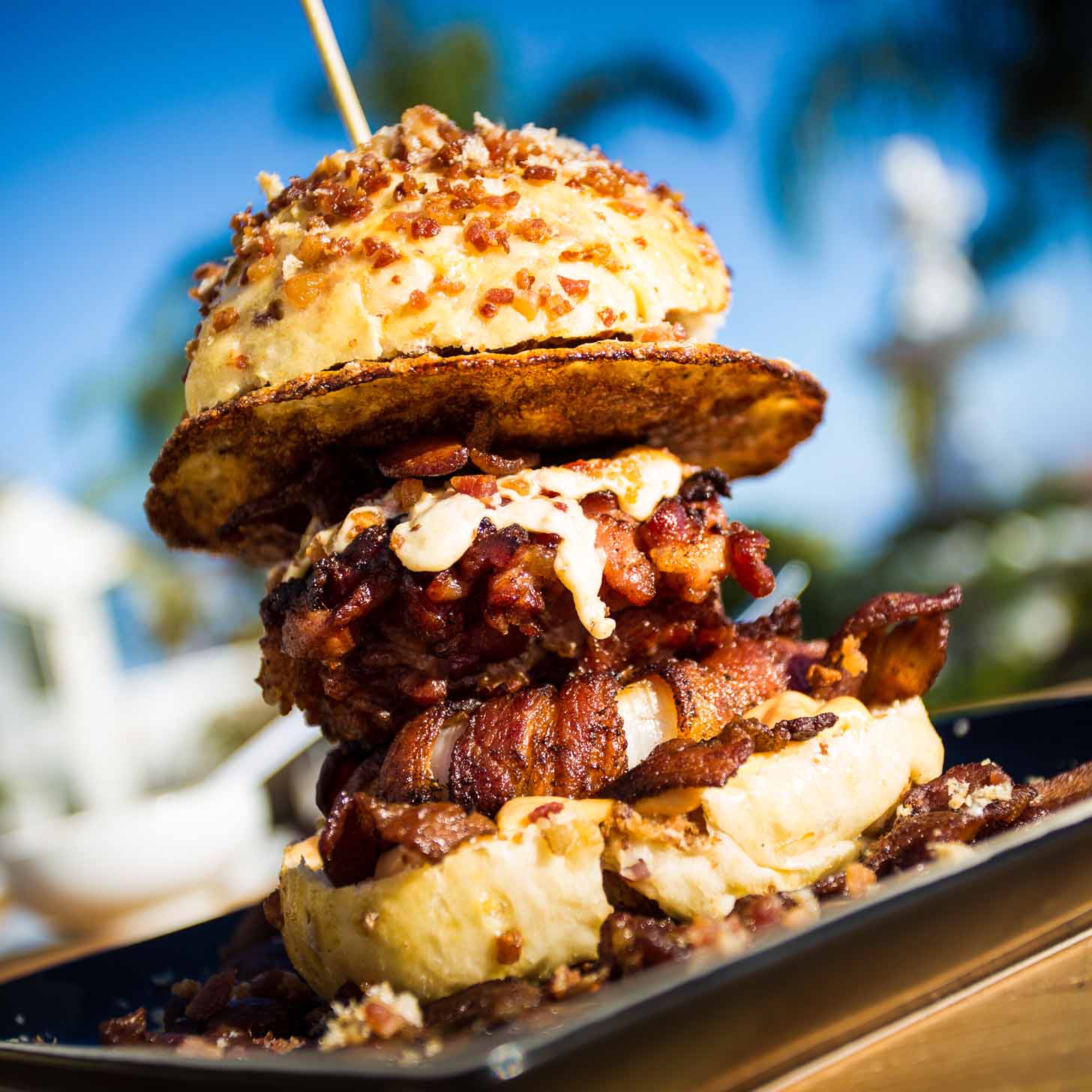 |
[TAG54]A family food blog with hundreds of simple, tested and approved recipes. Find easy step-by-step photo cooking instructions and video recipes. |
 |
[TAG55]This winter farro salad recipe is made with the most delicious blend of seasonal fruit, greens, nuts, crumbled cheese and tossed with a vibrant orange ginger |
 |
[TAG56]This lovely white wine sautéed mushrooms recipe is quick and easy to make, full of rich savory flavors, and can pair well as a side dish with many different |
 |
[TAG57]find out hundres of delicous food recipes |
 |
[TAG58]This traditional Swedish meatballs recipe is bursting with rich, savory flavors and topped with a creamy gravy. Always so comforting served over mashed |
 |
[TAG59]This classic Irish coffee recipe is easy to make with 4 ingredients in just a few minutes. Always so warm and cozy! Let’s warm up with a hot mug of Irish |
 |
[TAG60]The food blog with mostly healthy recipes made with real, whole foods inspiring more people to get into the kitchen and cook something good. |
 |
[TAG61]This snickerdoodle blondies recipe is irresistibly rich, buttery, tangy, and sprinkled with a crunchy cinnamon-sugar topping. Yes, they’re just as good as you |
 |
[TAG62]This creamy garlic mushroom orzo pasta recipe is easy to make and always so comforting and delicious. Say hello to one of my favorite back-pocket recipes |
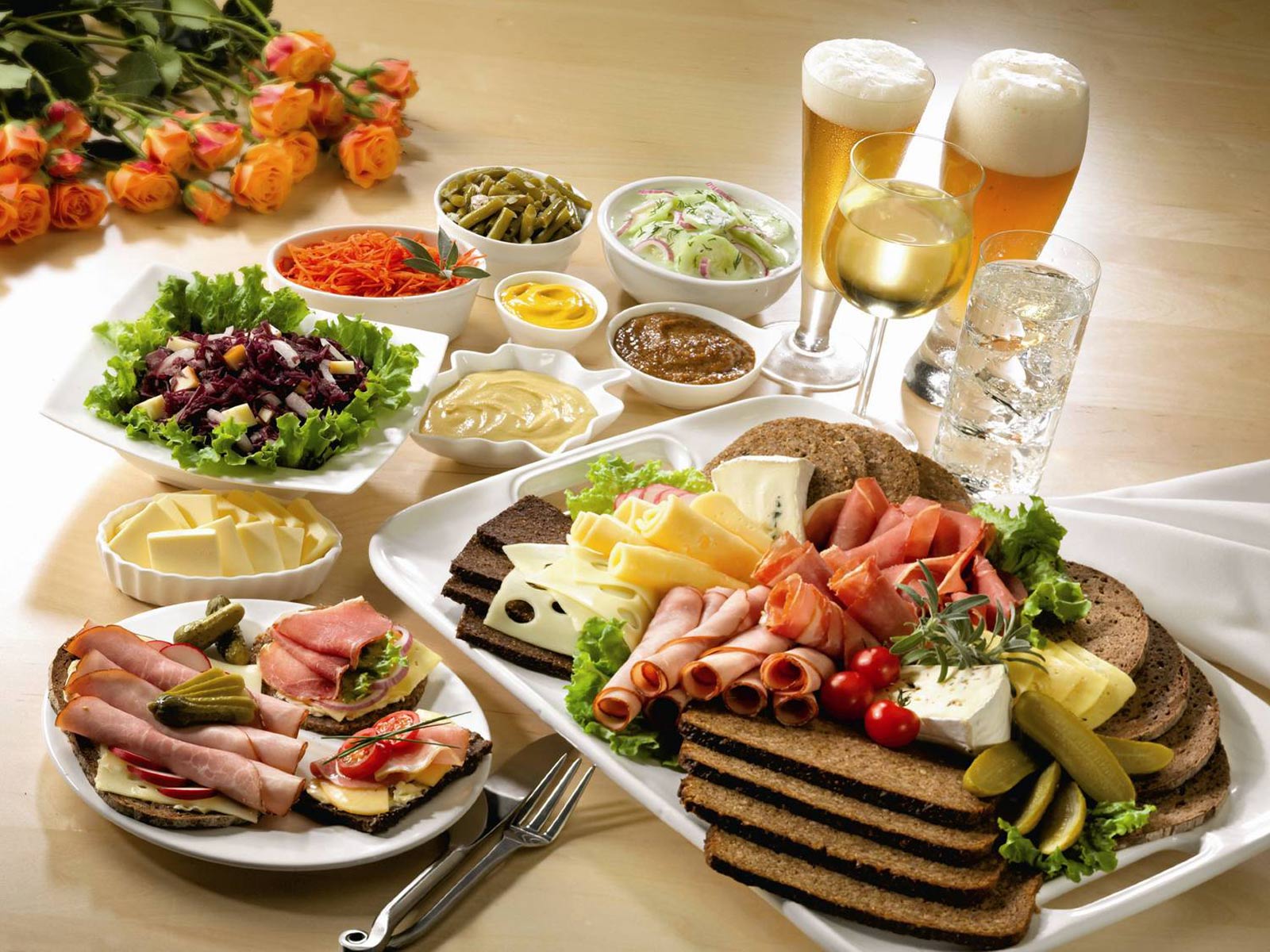 |
[TAG63]A food blog with hundreds of quick and easy dinner recipes. Classics done right, incredible one pot recipes, Asian takeout at home and holiday feasting! |
 |
[TAG64]This 3-ingredient homemade dog treats recipe is quick and easy to make and cut into whatever shapes you love. This holiday cookie season, we can’t forget about |
Did you miss our previous article...
https://belovedsaffron.com/recipes/makeahead-mashed-potatoes
.png)





